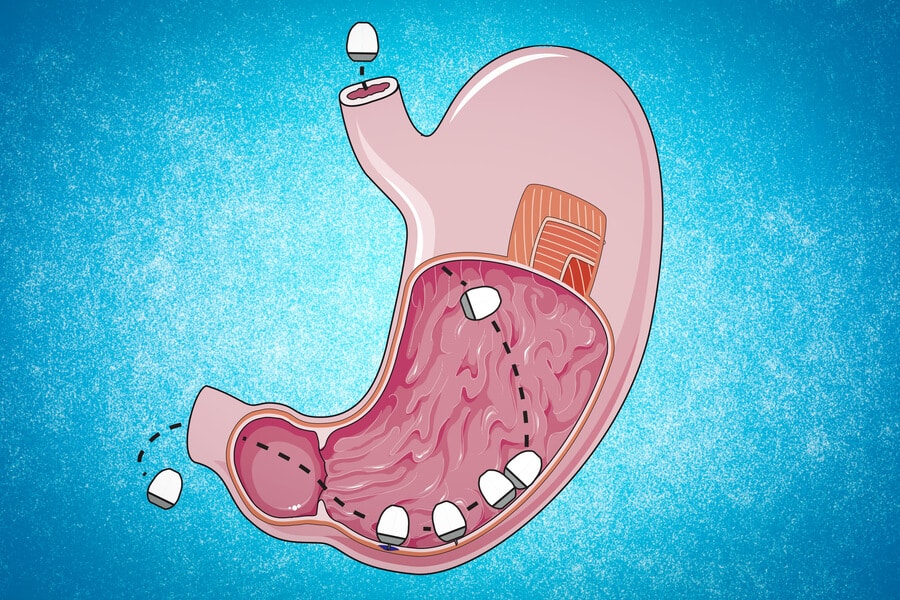Researchers have succeeded in developing a method to deliver RNA in a capsule that can be swallowed, a development that will make it easier to take RNA vaccines
[Translation by Dr. Moshe Nachmani]

Similar to most types of vaccines, today the RNA vaccines have to be injected, a method that can be a setback for people or children who are afraid of syringes. Now, a team of researchers from the Massachusetts Institute of Technology (MIT) has succeeded in developing a method to deliver RNA in a capsule that can be swallowed, a development that will make it easier to take RNA vaccines. In addition, the method could make it easier to take other RNA or DNA healing substances directly into the digestive system to treat diseases related to this system, such as stomach ulcers.
"Nucleic acids, especially RNA, may be very sensitive to degradation, especially in the digestive system. Overcoming this challenge opens the door to many approaches aimed at curing various diseases, including a potential oral vaccine," says Giovanni Traverso, professor of mechanical engineering at the Massachusetts Institute of Technology. As part of a new study published in the scientific journal Matter, the professor and his research team demonstrated that they were able to use the capsule they developed to deliver up to 150 micrograms of RNA - an amount greater than that currently used in messenger RNA (mRNA) vaccines against the coronavirus.
For several years, the team of researchers was engaged in the development of innovative methods for delivering drugs to the digestive system. In 2019, researchers succeeded in developing a capsule that, after being swallowed, is able to transfer solid drugs, such as insulin, into the stomach walls. The pill, the size of a cherry, has the shape of a stepped dome, similar to the shape of a turtle's shell. Just as the turtle is able to roll over on its back and return to its normal position, the capsule is able to orient itself so that its contents penetrate directly into the walls of the stomach. In 2021, researchers demonstrated that they were able to use a capsule to deliver large molecules such as monoclonal antibodies in liquid form. In the next step, the researchers decided to use the capsule to transfer nucleic acids, which are also large molecules. Nucleic acids are sensitive to discharge when they are introduced into the body, so it is necessary to protect them with protective particles. In this study, the researchers made use of a new type of polymeric nanoparticle that the team had recently developed. These particles, capable of transferring RNA with high efficiency, consist of a type of polymer called poly(beta-amino esters). In previous experiments, the researchers showed that the branched structures of these polymers are more effective than their linear counterparts in protecting the nucleic acids and introducing them into the cells. The researchers also showed that the use of two types of polymers together is more effective than the use of a single type. "We prepared a collection of branched polymers and found the most effective polymer," explains the lead researcher. "This finding will allow us to reduce the overall amount of nanoparticles that we will have to introduce into the body."
In order to test the effectiveness and activity of the nanoparticles, in the first step the researchers injected them into the stomachs of mice, without using the new capsule. The RNA they inserted codes for a reporter protein that can be detected in the tissue if the cells were able to assimilate the RNA. The researchers found that the reported protein reached the stomach and also the liver of the mouse, which indicates that the RNA reached other organs of the body and then the liver, the organ whose function is to filter the blood. In the next step, the researchers freeze-dried the RNA-nanoparticle conjugate and inserted it into the innovative transfer capsule that was developed. With this method, the researchers were able to insert 50 micrograms of messenger RNA into the capsule, and pass three such capsules into the stomach of pigs, so that the total amount was 150 micrograms. This amount is greater than that used in messenger RNA (mRNA) vaccines today against the corona virus. In experiments on pigs, the researchers found that the protein was assimilated only in the stomach cells, but not in other organs of the body.
In their designs, the researchers hope to increase the amount of RNA injected into the organs by changing the composition of the nanoparticles or by delivering larger doses. However, the researcher explains: "In the digestive system there are many immune cells and it is known that stimulating the immune system of the digestive system provides an immune response." The researchers now plan to investigate whether a systemic immune response can be generated, including the activation of B cells. and T cells, by delivering messenger RNA vaccines using the innovative capsule. This approach could also be used for the development of targeted treatments for diseases of the digestive system, which are currently difficult to treat within the framework of subcutaneous injection. "When you perform systemic drug delivery through the veins, it is not easy to direct the drug to the stomach," explains the lead researcher. "We believe that our method could be a potential method for treating a variety of diseases related to the digestive system."
More of the topic in Hayadan:

2 תגובות
Shabnet and Bibi will shove all the medicines and vaccines up their ass.
Get out of my vein!!
Governments and corporations that legislate to penetrate us without permission, who are you rapists??